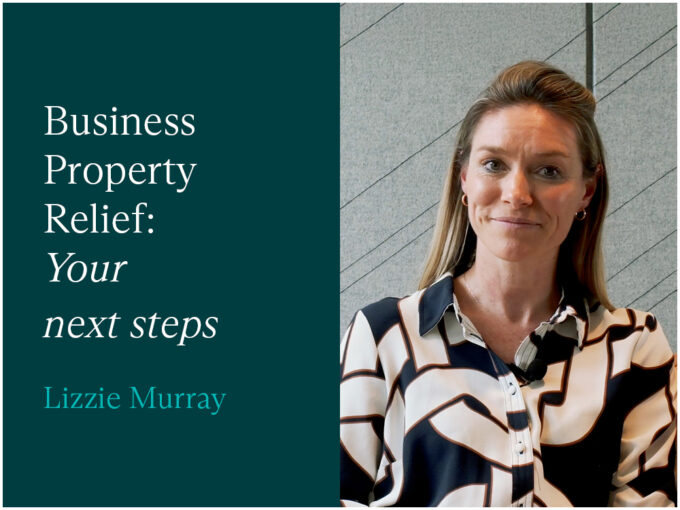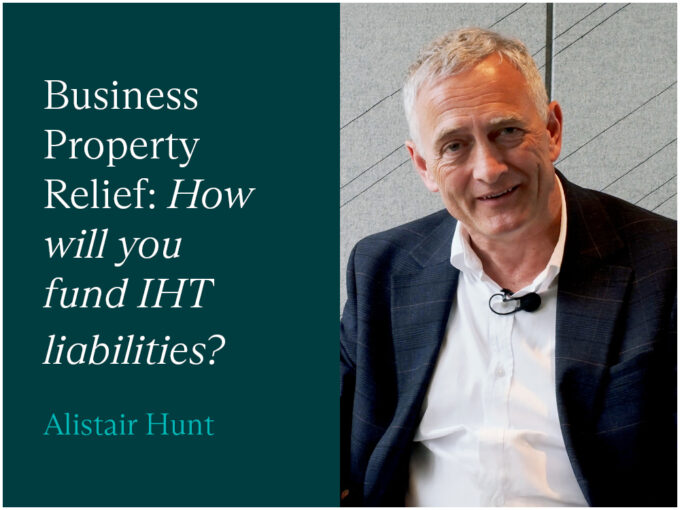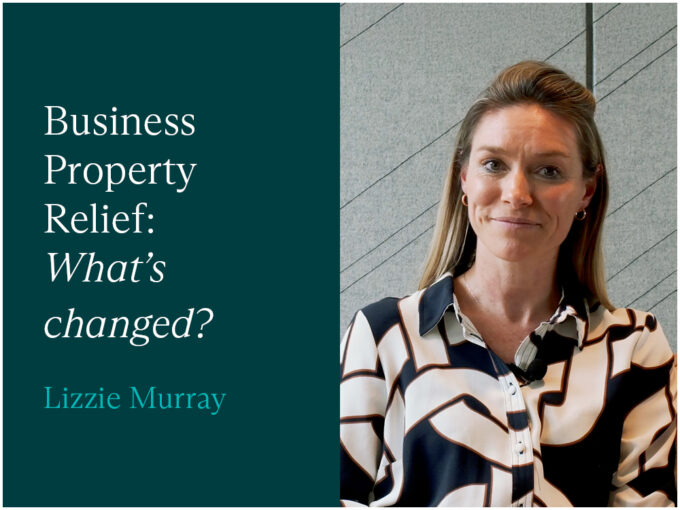Business Property Relief (BPR) can significantly reduce inheritance tax (IHT) payable when a person dies, or in some instances, when a person gifts assets to another person or to a trust during their lifetime. Despite the changes announced in the 2024 Autumn Budget, it remains a valuable tax relief.
This article summarises how BPR works, the conditions that must be met to claim the relief, and some tips to ensure you maximise the relief.
What is Business Property Relief?
BPR reduces the value of a gift of ‘relevant business property’ for IHT purposes. Subject to various conditions, the relief is given at either 100% or 50% depending on the type of asset.
Who qualifies for Business Property Relief (BPR)?
100% relief applies to:
- Sole trade businesses or interests in partnerships or LLPs,
- Securities giving control of unquoted companies, and
- Shares in unquoted companies or shares listed on an alternative stock exchange.
50% relief applies to:
- Shares or securities giving control of quoted companies, and
- Land, buildings, machinery and plant owned by the taxpayer but used by a company controlled by the taxpayer or a partnership of which they are a partner.
At the Autumn Budget 2024, the government announced that from 6 April 2026, the full 100% relief for BPR (and Agricultural Property Relief (APR)) will be limited. The 100% rate of relief will only apply to the first £1 million of combined agricultural and business property and any value above this will receive relief at 50%. These new rules also apply for lifetime gifts on or after 30 October 2024 if the donor dies on or after 6 April 2026 but within seven years of the gift.
Relevant business property
For any of the assets mentioned above to count as relevant business property:
- The business, or the company’s business, must be carried on with the aim of making a profit and must not consist wholly or mainly (ie more than 50%) of:
- Dealing in securities, stocks or shares,
- Dealing in land or buildings, or
- Making or holding investments.
So basically, the business must be more ‘trading’ than ‘investing’.
- The business or company must be an ongoing business which is not in the process of liquidation or winding up or subject to a binding contract for sale, and
- The asset must usually have been owned by the donor for at least two years.
Business Property Relief examples
A business investing in properties and letting them would not qualify for BPR as its business would consist of making or holding investments. However, if a farming business had a few surplus properties that it let out, BPR may still be available for the business as a whole, including the value of the let property, if the business doesn’t consist ‘mainly’ of the making of investments.
There is a lot of case law to help determine whether a business is more trading than investing, particularly whether it consists mainly of making or holding investments. The Farmer case set out these five factors to consider when assessing the ‘wholly or mainly’ test, an approach also taken by the Court of Appeal in the George (executors of Stedman deceased) case:
- The overall context of the business.
- The capital employed.
- The time spent by employees.
- The turnover.
- The profit.
After considering these factors, it’s necessary to stand back and look at all the factors together to decide if the business consists mainly of making or holding investments without giving too much weight to any single factor.
In the George case, it was decided that BPR was due on the whole of a residential caravan park as a hybrid business. Although holding property as an investment was one component of the businesses, it was not the main component.
Excepted assets
If assets are transferred which are not used in the business, their value will be excluded from the benefit of any BPR. The two main types of excepted assets to watch out for are surplus cash and assets used privately.
Surplus cash is any cash that HMRC considers to be excessive for the business’ current or specific future needs. For example, HMRC doesn’t accept holding funds as an ‘excess buffer’ for an economic downturn as a valid reason for not classifying it as an excepted asset. If you have cash which could be seen as ‘surplus’, you should keep evidence showing that it’s needed for a specific project or purpose.
Assets used wholly or mainly for the personal benefit of the donor or someone connected to them will also be excluded assets.
Debts
If a debt was used to buy or improve BPR assets, it must be set against these assets before any relief is given, regardless of the type of the asset against which the debt is secured.
Clawbacks
A lifetime gift from one person to another might qualify for BPR when it’s made. However, it will still be a potentially exempt transfer (PET) and won’t be subject to IHT if the donor lives for seven years after making the gift.
If the donor dies within those seven years, the PET fails. The gift will be assessed for BPR at the earlier of the donor’s or donee’s death, but its status at that time will be viewed from the donee’s perspective, not the donor’s. This can lead to BPR being clawed back. This clawback, which also applies to chargeable lifetime transfers (typically arising on a gift into trust), can cause issues and result in unexpected IHT charges if the asset no longer qualifies for BPR.
APR and BPR
APR is available on gifts of land occupied for the purposes of agriculture, along with appropriate buildings and farmhouses. It’s important to consider both reliefs where they might apply, such as for landed estates and rural businesses. Sometimes both APR and BPR may be available on the same property, while sometimes only one of the reliefs may be available. For more details on APR, see our article on Agricultural Property Relief.
Summary
It’s a good idea to regularly review your assets to confirm their inheritance tax treatment, as this can change due to a change of use or the impact of new legislation and case law.
This article is based on law and HMRC practice at 12 February 2025 and includes changes announced by the government which are not yet law.
Further reading:
Agricultural Property Relief and Business Property Relief reforms from 6 April 2026
Business Property Relief and Agricultural Property Relief remain valuable despite future changes
How we can help
The proposed changes to inheritance tax will inevitably make many business owners question whether they have a viable business to pass on to their successors after the IHT liabilities are settled. However, with careful planning and open conversations, it’s possible to mitigate the impact of these changes.
Our tax experts are working with clients to help them build these mitigation strategies ahead of the April 2026 deadline. Get in touch with one of our experts today using the form below.














